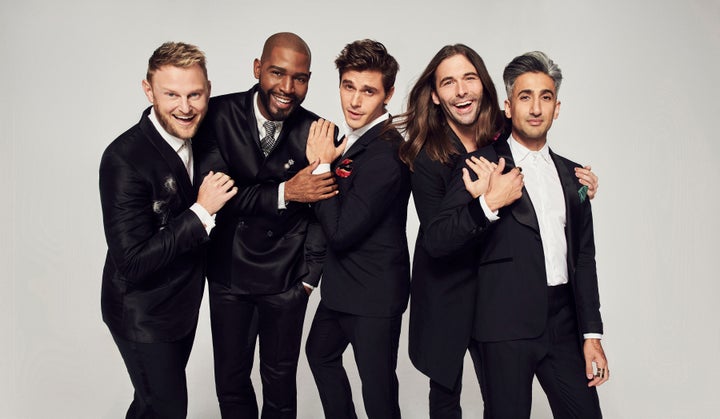
When the pop culture history books of the future are written, few will deny that when Netflix released Queer Eye in February 2018, it was the success of the year so far. The revamped version of Bravo’s Queer Eye For The Straight Guy was an instant hit and has since become a firm audience favourite.
Then, on 24 May, the show, which sees a group of gay men, each of whom specialises in a different aspect of modern life (fashion, culture, food and wine, design, and grooming) coming to the aid of a man who needs their help in one way or another, announced via Twitter that it would return for a second series on 15 June. The reaction to the show’s renewal was overwhelmingly positive as eager fans learned that they had mere weeks to wait to get their next hit of Antoni, Tan, Karamo, Bobby, and Jonathan aka ‘The Fab Five’.
Much has been written about how good Queer Eye is and the sheer volume of tweets from passionate fans is all that is needed to demonstrate the strength of feeling about the programme’s return but little has been said about exactly why it works and why it is such an important show; which is surprising because, frankly, it does and it is.
Any genuine discussion of Queer Eye, as with any reboot, must start with a nod to the original. The first iteration of Queer Eye For The Straight Guy was an indisputably big deal. It’s often forgotten that in 2003, when the original show debuted, the world saw very little in the way of LGBT people on TV at all. Remember, in the UK, Clause 28 was still in effect in most of the country at that time. The show was, at the time, revolutionary, important, and achieved a lot. As Tan (the fashion guy) remarks in the opening episode, “the original show was fighting for tolerance - we’re fighting for acceptance”.
The first aspect of Queer Eye that makes it such a great update, perhaps even an improvement, on its predecessor is the range of men represented by the show. While the original was definitely a step forward in representation at the time, it is great to see the new show so committed to representing such a cross-section of chaps in society.
In Queer Eye 2018 there are gay black men, Asian men, straight (self-described) “butt ugly rednecks”, Christians, family men, and many other blokes embodying a wide range of styles of masculinity. It is a regular panoply of men - each of whom is treated with respect, care, uniquely male humour, and tenderness by the millennial Fab Five. It replaces the old show’s main flaw, a certain condescending cattiness, with gentle, ‘knock under the chin’ style jocularity - and is better for it. Basically, Queer Eye does the essential work of representing modern men in a wide variety of forms while maintaining a distinct sense of humour.
Secondly, Queer Eye is better than almost any other show in modern times at confronting issues without seeking needless conflict. Some of the most effective and emotionally involving moments occur when men from different parts of American society talk to one another rather than scream and, in doing so, show how much they have in common. Who could fail to be invested when Karamo discusses Black male America’s relationship with the police with a Georgia cop or when Bobby, who endured homophobic bullying as a young man, chats about religious bigotry with a Christian dad?
Not I.
While diverse representations and confronting difficult issues are important there is still one part of the show that makes 2018’s Queer Eye so necessary and makes it such a step forward from the original.
At its heart, Queer Eye is unashamedly a show about men. It’s a men’s lifestyle magazine, albeit an excellent one, in video form. However, while many men’s lifestyles mags, including, to an extent, the original show, are about naive aspiration and parade a cavalcade of unachievable looks, products, and behaviours before their audiences - the goals set by Queer Eye are deliberately realistic.
Fundamentally, that’s what makes Queer Eye so good; the fashion advice is affordable, the style is achievable, and the personal development goals are of a kind that most modern men can not only aspire to but can achieve and maintain. There’s nothing in the way of ‘high fashion’ (as Tan says, it’s about “style” not “fashion”) or extravagant gourmet cooking and it is boldly unpretentious .
At its warm, cuddly centre, Queer Eye is about real-life men doing real-life man things - only better, thanks to the the Fab Five. That’s why it works, why it’s important, and why we should all be delighted that a second series is on the way.
